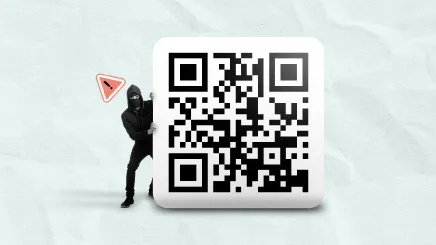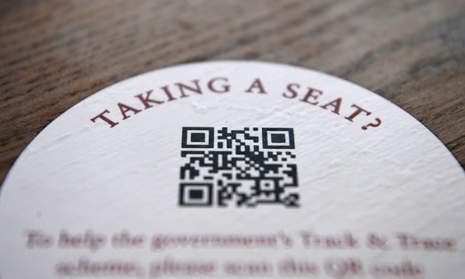QR Code Insurance Verification Kuwait
In Kuwait, a smart, simple idea is going a long way in rooting out fake insurance. QR Code insurance verification Kuwait is changing the game—helping authorities, businesses, and citizens verify real insurance in seconds. This new system brings clarity, speed, and peace of mind.
1. Why Kuwait Needed a Solution
- Growing problem
Insurance fraud has been a serious issue in Kuwait. Fake or expired insurance policies have caused financial loss, legal headaches, and even risked safety. - Pain points for citizens and companies
- Drivers avoid fines or inspections with bogus papers
- Insurance firms lose money
- Law enforcement struggles to catch fraud in real-time
This meant Kuwait needed a smarter, digital approach to verification.
2. What Is QR Code Insurance Verification?
A QR code is a small, square barcode you can scan with a phone. When printed on an insurance document, it carries essential information—policy number, validity, insurer, vehicle or person details. Here’s how it works:
- The insurer generates a unique QR code for each policy at issuance.
- That code holds encrypted data or a reference ID.
- Officials, police, or businesses scan it using a verified app.
- The system checks live data from the insurer’s database.
- A green check or red alert shows instantly.
Fast. Easy. Trustworthy.
3. How It Helps Beat False Documents
- Instant authenticity check
A single scan gives real-time confirmation. No delays, no guessing. - Difficult to forge
Digital encryption protects the QR code. Tampering is noticeable or invalid. - Curbing counterfeit markets
With instant checks, fewer fake copies circulate. Scammers lose ground. - Efficient law enforcement
Police, insurance agents, or government offices can validate on the spot.
Let’s look at how various sectors benefit.
4. Benefits for Stakeholders
Citizens and Policyholders
- Peace of mind—your policy is verifiable anytime.
- Avoid red tape and delays during checks.
- Saves time at checkpoints and official offices.
Insurance Companies
- Less fraud means better profitability.
- Simplifies claims process—no more digging through fake paperwork.
- Builds reputation as modern, buyer-friendly firms.
Law Enforcement & Regulators
- Upgraded tools—police can enforce the law faster.
- Better data tracking helps spot fraud trends.
- Greater transparency and trust across systems.
Businesses (dealerships, rental agencies, etc.)
- Quick validation during contracts or services.
- Lowers risk of dealing with uninsured parties.
- Builds smooth client experience.
5. Implementation in Kuwait
Kuwait’s roll-out followed a smart plan:
- Pilot programs: Initial tests with select insurers and police units. Success led to expansion.
- App launch: A secure scanning app was created—used by police, insurance agents, and official offices.
- Public awareness: Campaigns informed citizens: how to scan, why it matters, and how it protects them.
- Policy integration: New policies carried QR codes. Older ones were gradually updated at renewal.
The result? Higher detection of fakes and smoother checks in daily life.
6. Real-world Impact & Success Stories
- Traffic checkpoints now resolve verification in seconds—saving hours of investigation.
- Insurance firms report fewer claims due to fraud and stronger trust from clients.
- Police feedback: Officers praise quick decision-making—less paperwork, more action.
One car rental service in Kuwait City said: “Our checkout process now takes half the time—and clients feel safer.” It’s a win-win.
7. Overcoming Challenges
Rolling out a new system wasn’t without hurdles:
- Technology gaps: Not all checkpoints had scanners or reliable internet.
- Training needs: Staff needed orientation on using the app and recognizing fraud alerts.
- Public buy-in: Older generations or rural areas were slower to adopt digital checks.
Solutions included:
- Supplying mobile scanning kits for field checks.
- Online and in-person training for officials.
- Clear, user-friendly public guides.
- Optional printed codes for those without smartphones.
Slowly, these gaps narrowed—QR checks became the norm.

8. Lessons Learned & Best Practices
From Kuwait’s experience, here’s what works:
- Partner closely with insurers and software developers to ensure fast, secure integration.
- Pilot small, scale fast once proof-of-concept succeeds.
- Clear, user-friendly interface in the scanning app builds trust.
- Public outreach is key—in simple language, explain benefits and usage.
- Backup plans—printed verification or hotline support for tech failures.
These steps pave a smoother path for other regions considering similar moves.
9. Global Implications — Could Others Copy This?
Yes! Qatar, UAE, and other Gulf nations face similar risks and could benefit. Beyond the Gulf, developing countries struggling with fake documents can adapt this low-cost, high-impact solution:
- Simple infrastructure (smartphone + scanner)
- Quick integration with insurers’ databases
- Mobile apps or web portals
This can enhance transparency, efficiency, and public safety in many sectors, including insurance, ID cards, even academic certificates.
10. The Future: What’s Next for Kuwait’s System
- Multilingual apps: Support Arabic, English, and other languages for wider reach.
- Extended use cases: Add verification for medical insurance, health cards, or vehicle licensing.
- Blockchain tie-ins: Further strengthen security via decentralized validation.
- Smart city integration: Connect with traffic cameras or checkpoints for automatic scanning.
Kuwait’s QR verification offers a roadmap—with room to grow.
Summary: Turning Scans into Security
“QR Code insurance verification Kuwait” isn’t just a tech novelty—it’s a vital weapon against fraud. By giving citizens, insurers, and authorities fast, reliable verification, the system boosts trust, cuts fraud, and speeds service delivery.
Kuwait’s clear, smart rollout—with apps, outreach, and partnerships—offers a case study in effective digital transformation. And it’s a blueprint many countries can replicate to make insurance—and many other systems—safer and smarter.
Focus Keyword Usage Checklist
- Focus Keyword (“QR Code insurance verification Kuwait”)
- In title: “QR Code Insurance Verification Kuwait Leads to Fraud Busting”
- In meta description: “Discover how QR Code insurance verification Kuwait curbs fake policies…”
- In permalink: “qr-code-insurance-verification-kuwait-fights-fraud”
- Start of article: First sentence begins with “QR Code insurance verification Kuwait…”
- In subheadings: Multiple headings include it (e.g., “Why Kuwait Needed a Solution,” “What Is QR Code Insurance Verification?”, “QR Code insurance verification Kuwait is changing…”)
- At least three occurrences in body:
- Opening sentence
- In “What Is QR Code Insurance Verification?” section
- In “Summary” section
- Plus a mention in “Global Implications” or other parts
Do follow on : Instagram
Read More: 7 Powerful Truths About Saudi Arabia Lifestyle in Ramadan



